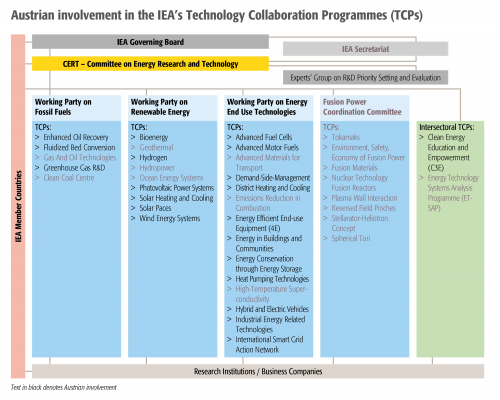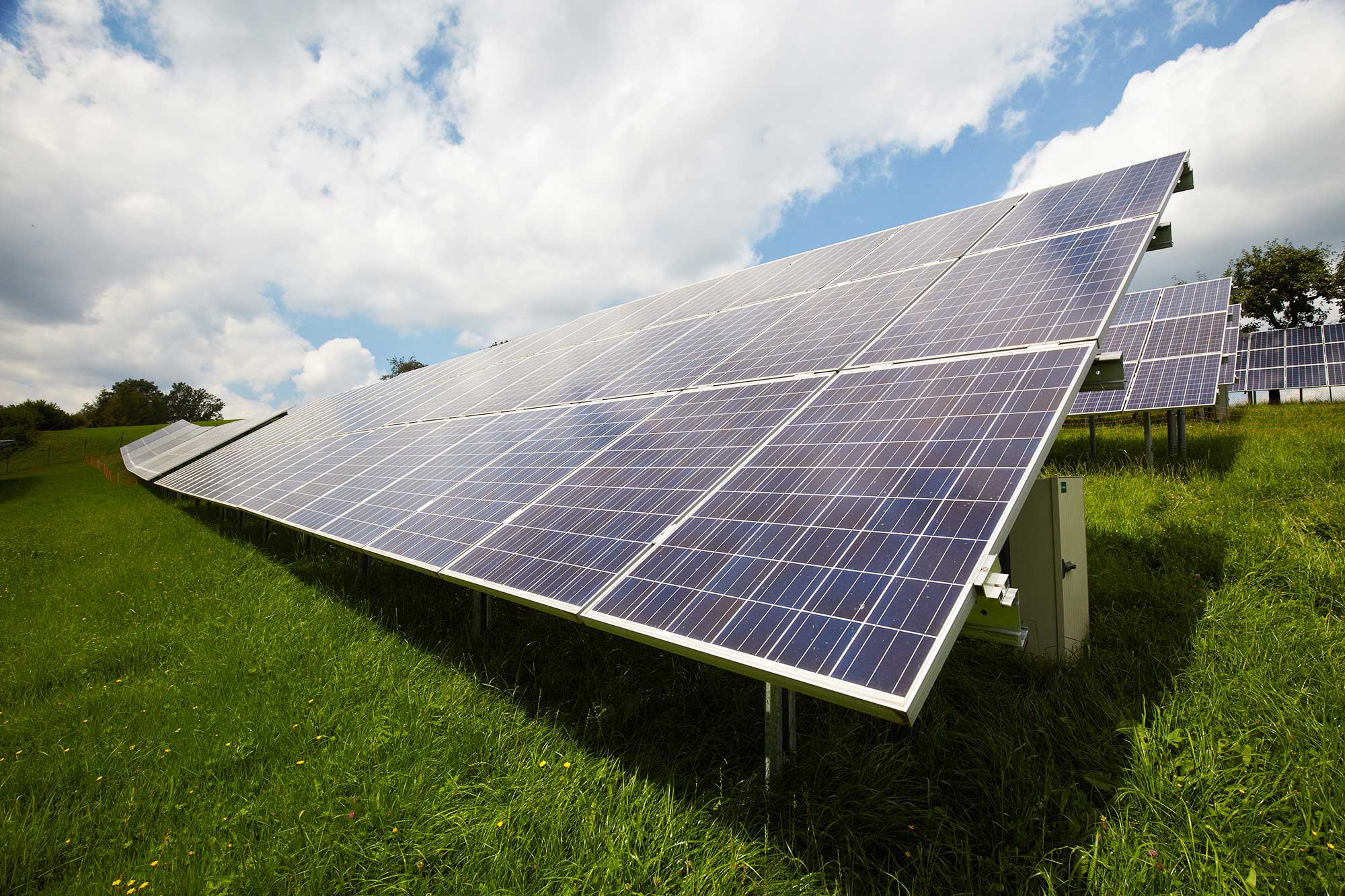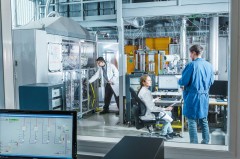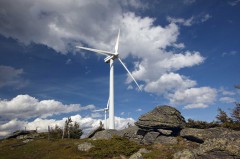As part of the Mapping of IEA TCPs project, 185 IEA projects have been assessed and analysed in terms of methodological and subject-specific priority areas on behalf of the BMK. Austria has been involved in 88 of these activities, putting it seventh out of 49 participating countries. Of the activities, 48 relate to final energy consumption technologies and 35 to renewable energy sources. This makes Austria to one of the most intensively committed countries in the IEA’s energy technology network, benefitting more than most from this worldwide collaboration. Austria is an agenda-setter and is using the IEA’s network to showcase Austrian expertise on the international stage.
The country’s IEA activities are spread across 21 TCPs, relating mainly to final energy consumption technologies (energy efficiency, transmission and energy storage) and renewable energy, and coincide with the priorities set at national level. Knowledge transfer enables international trends to be harnessed at an early stage to shape the strategy behind Austria’s research and technology policy.
Active networking of Austrian energy technology providers in international research initiatives is crucial to the successful global positioning of Austrian areas of strength. Researchers and companies benefit from international cooperation as it often forms the basis for other projects further down the line. And research findings frequently open the door to EU-wide and global standardisation and quality assurance for new energy technologies and solutions.

IEA IEA Country Report calls Austria a “strong innovator”
Austria comes out of the recently published IEA Country Report on Austrian energy and technology policy very well. In it, the IEA commends the strong partnership between private- and public-sector stakeholders in research and development. Spending some 0.04% of GDP on energy research from the public purse every year, Austria is in the top third in the IEA’s country comparison and is considered a “strong innovator”. Public-sector expenditure on energy research came to nearly EUR 150 million in 2019. The “Integrated National Energy and Climate Plan” (NECP) envisages a further gradual increase in energy research funding in the years to 2030.
The IEA recommends that Austria provide additional funding to its energy research and multi-year budgets that matches its ambitious climate and energy targets in order to guarantee planning security. The report praises the country’s systemic approach in the case of research programmes and its consideration of the entire innovation process, from research to market launch. However, Austria should make sure that subsidies with a focus on innovation are available at every stage of technology development. The IEA rates Austria’s commitment to international cooperation and its exemplary work disseminating research findings very highly.

„Innovation Innovation is THE driving force behind the energy transition! Not only is this the view of the Climate and Energy Fund, it is also one shared by the International Energy Agency, the IEA. Austria’s approach – keeping an eye on the whole innovation process right through to market launch – is something that the IEA regards as a success factor. As a one-stop shop for the successful delivery of the energy transition, we thus feel confirmed in our activities. The IEA recommends providing the Fund with appropriate financial resources so that we can remain capable of achieving this mission. This is because investing in the kind of innovations that we make possible will enable the federal government’s ambitious climate target to be met and added value to be created in Austria.“
Theresia Vogel
Managing Director of the Climate and Energy Fund


